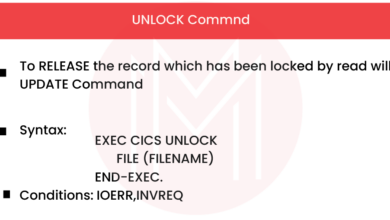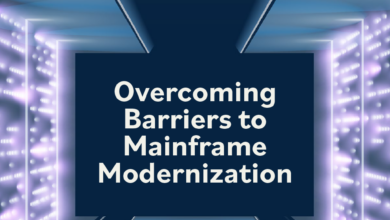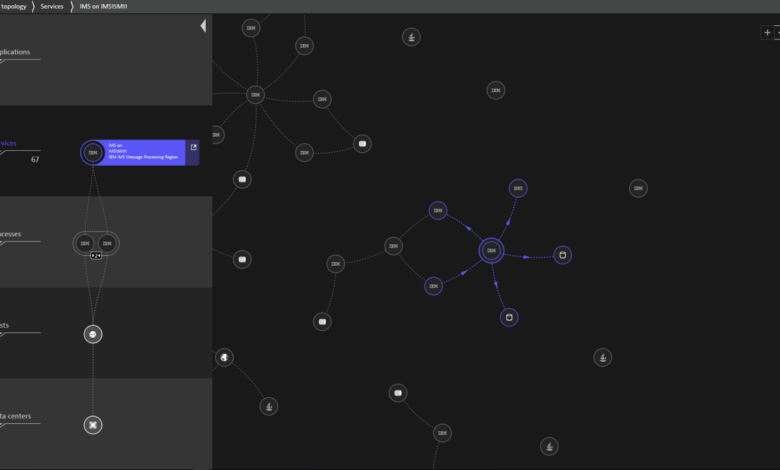
Mainframe Solutions Free Trial Your First Step
Mainframe Solutions Free Trial: Ever wondered what it’s like to harness the power of mainframes without the hefty upfront cost? This post dives deep into the world of free trials for mainframe solutions, exploring what’s offered, what’s not, and how to make the most of this valuable opportunity. We’ll cover everything from understanding the features and limitations of different providers to navigating the technical setup and evaluating the business implications.
Get ready to unlock the potential of mainframe technology!
Choosing the right mainframe solution can feel overwhelming, especially with so many providers offering varying features and pricing models. A free trial provides a risk-free way to test-drive different platforms, assess their suitability for your specific needs, and determine whether they align with your business goals. We’ll walk you through the process of evaluating these trials, helping you make an informed decision that sets your organization up for success.
Understanding Mainframe Solutions and Free Trials
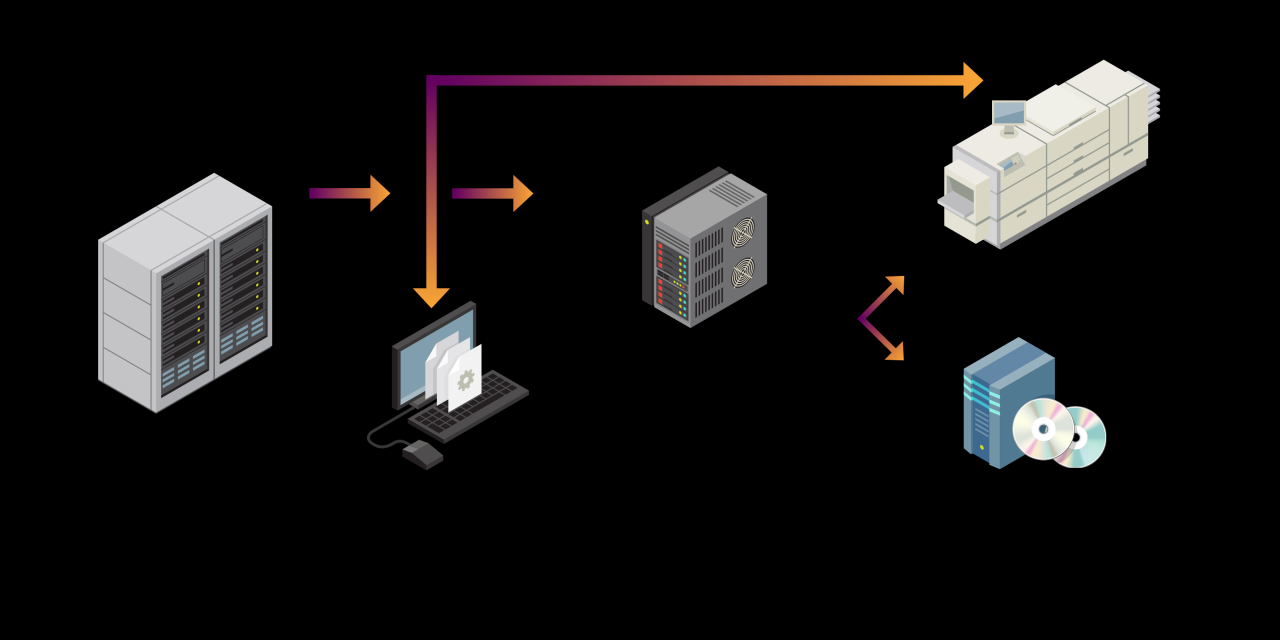
So, you’re curious about mainframe solutions and the tantalizing prospect of a free trial? That’s smart! Mainframes, despite their age, remain critical for many large organizations, handling massive amounts of data and mission-critical transactions. Free trials offer a valuable opportunity to explore their capabilities without significant upfront investment. Let’s dive into what you can expect.
Mainframe free trials typically provide access to a subset of the vendor’s full mainframe offering. This allows potential customers to experience the core functionality and evaluate its suitability for their needs. Think of it as a test drive before committing to a full purchase. It’s a chance to get your hands dirty and see if the system integrates smoothly with your existing infrastructure.
Typical Features Included in Mainframe Solutions Free Trials
A typical free trial might include access to core operating system functions, a limited set of programming tools (like COBOL or PL/I compilers), basic database management capabilities, and perhaps some sample datasets for testing purposes. The exact features offered will vary considerably depending on the vendor and the specific solution. For example, one trial might focus on modernization tools, while another might concentrate on security features.
The key is to carefully examine the trial’s specifications to ensure it aligns with your evaluation goals.
Limitations of Mainframe Solutions Free Trials
It’s crucial to understand that free trials are, by their nature, limited. Expect restrictions on the amount of data you can process, the number of users who can access the system concurrently, and the duration of access. You might also find that certain advanced features are unavailable in the trial version. For instance, advanced analytics or sophisticated security modules might be reserved for paying customers.
Moreover, the support level during the trial period might be more basic than what you’d receive with a full subscription. Think of it as a guided tour, not a complete ownership experience.
Comparison of Different Mainframe Solutions Offered with Free Trials
The mainframe landscape is not monolithic. Different vendors offer various solutions catering to specific needs. Some trials might focus on cloud-based mainframe environments, allowing you to experience the benefits of scalability and flexibility. Others may emphasize modernization tools, aiding in the transition from legacy systems to more contemporary architectures. Still others might concentrate on specific aspects like database management or security.
A direct comparison requires examining each vendor’s offering individually, paying close attention to the features included, the limitations imposed, and the overall user experience. For instance, IBM’s offerings will differ from those of other vendors in terms of functionality, pricing, and support.
Target Audience for Mainframe Solutions Free Trials
Mainframe free trials primarily target IT professionals, including developers, system administrators, and database administrators. These individuals need to evaluate the feasibility of integrating a mainframe solution into their existing infrastructure and assess its capabilities. Business users, especially those involved in decision-making concerning IT investments, might also participate in the evaluation process to understand the potential benefits and costs. The trial provides a hands-on opportunity to assess whether the solution aligns with the organization’s technical and business requirements.
Evaluating Mainframe Solution Providers Offering Free Trials
Choosing the right mainframe solution can be a daunting task, especially given the complexities of legacy systems and the wide array of vendors offering services. Free trials offer a valuable opportunity to test-drive different solutions before committing to a long-term contract. However, a thorough evaluation is crucial to ensure the chosen solution aligns with your specific business needs and budget.
This post will guide you through the process of evaluating mainframe solution providers offering free trials.
Mainframe Solution Provider Comparison
The following table compares four hypothetical mainframe solution providers offering free trials. Remember that specific features, trial durations, and pricing can change, so always verify directly with the provider. This is for illustrative purposes only and does not represent any specific vendor’s offerings.
| Provider Name | Key Features | Trial Duration | Pricing After Trial |
|---|---|---|---|
| Acme Mainframe Solutions | Automated migration tools, performance monitoring, security enhancements, 24/7 support | 30 days | Subscription-based, tiered pricing starting at $5,000/month |
| Beta Legacy Systems | Modernization tools, cloud integration, application performance management, basic support | 14 days | Per-project pricing, with minimum engagement of $10,000 |
| Gamma Mainframe Experts | Consulting services, customized solutions, training, ongoing maintenance contracts | 60 days | Hourly rate, typically ranging from $150-$250/hour |
| Delta Mainframe Technologies | Self-service portal, automated testing, DevOps integration, limited support during trial | 21 days | Pay-as-you-go model, with usage-based charges |
Advantages and Disadvantages of Choosing a Mainframe Solution Based Solely on a Free Trial
Relying solely on a free trial to select a mainframe solution presents both opportunities and risks. A well-structured trial can provide valuable hands-on experience, but it’s crucial to consider the limitations.Advantages: A free trial allows for direct evaluation of the solution’s functionality, user interface, and performance within your specific environment. It offers a risk-mitigation strategy, enabling you to test compatibility and identify potential issues before a full commitment.
The hands-on experience can inform better decision-making.Disadvantages: Free trials typically offer limited functionality and support. They may not accurately reflect the long-term performance or scalability of the solution under sustained workloads. Critical aspects like long-term support, security updates, and vendor responsiveness may not be fully apparent during a short trial period. The trial environment may differ significantly from a production environment.
Checklist for Evaluating Mainframe Solution Free Trials
Before initiating a free trial, a structured evaluation is essential to ensure it aligns with your business objectives. The following checklist can guide your assessment.
This checklist helps ensure a comprehensive evaluation of the free trial’s suitability for your specific business needs. It covers technical aspects, support, and long-term implications.
| Criteria | Evaluation |
|---|---|
| Clearly defined objectives for the trial | List specific goals and metrics to be measured during the trial. |
| Compatibility with existing infrastructure | Assess compatibility with hardware, software, and network configurations. |
| Adequacy of trial environment | Determine if the trial environment accurately reflects production requirements. |
| Level of support provided during the trial | Evaluate the responsiveness and expertise of the vendor’s support team. |
| Scalability and performance testing | Test the solution’s ability to handle anticipated workloads and future growth. |
| Security considerations | Assess the security features and compliance certifications of the solution. |
| Post-trial pricing and support options | Thoroughly review pricing models, contract terms, and ongoing support costs. |
| Vendor reputation and stability | Research the vendor’s track record, financial stability, and customer reviews. |
Technical Aspects of Mainframe Solutions Free Trials
Getting your hands on a mainframe solution free trial can be a fantastic way to explore the capabilities of these powerful systems without the commitment of a full purchase. However, the technical side of things can seem daunting at first. This section will walk you through the typical process, requirements, and setup involved. Understanding these aspects will allow you to make the most of your trial and effectively evaluate the solution.
Mainframe Solutions Free Trial Setup Process
The setup process for a mainframe solutions free trial varies depending on the provider. Some offer cloud-based trials accessible through a web browser, while others might involve setting up a virtual machine or accessing a dedicated test environment. Regardless of the method, expect a straightforward process guided by the provider’s documentation and potentially their support team. Generally, the process involves registering for the trial, receiving access credentials, and then following the provider’s instructions to access the environment.
Clear, concise instructions are usually provided, often with video tutorials or FAQs to assist users at every step.
Technical Requirements and Prerequisites for Mainframe Solutions Free Trials
Before diving into a mainframe solutions free trial, it’s crucial to understand the technical requirements. These requirements usually involve a combination of hardware, software, and network considerations. Hardware requirements can range from a reasonably modern personal computer with sufficient RAM and processing power for a browser-based trial, to more robust machines for trials involving virtual machines or remote desktop connections.
Software requirements often include a modern web browser (such as Chrome, Firefox, or Edge) and potentially specific client software provided by the vendor. Network requirements are generally focused on a stable internet connection with sufficient bandwidth to handle the data transfer involved in accessing and utilizing the trial environment. Some providers may also require specific network configurations, such as allowing access through specific ports or VPNs.
Step-by-Step Guide to Setting Up a Mainframe Solutions Free Trial Environment
The specific steps will depend heavily on the provider, but a generalized example follows. Remember to always refer to your provider’s official documentation for the most accurate and up-to-date instructions.
- Registration: Visit the provider’s website and complete the registration form, providing necessary information such as your name, organization, and contact details.
- Trial Activation: After registration, you might receive an email containing activation instructions or a link to access your trial environment. Follow these instructions carefully.
- Access Credentials: You’ll receive unique credentials, such as a username and password, to log in to the trial environment. Keep these credentials secure and confidential.
- Environment Access: Depending on the provider, you might access the trial environment through a web browser, a virtual machine, or a remote desktop connection. The provider’s documentation will guide you through this process.
- Software Installation (If Necessary): Some trials may require installing specific client software to interact with the mainframe environment. Follow the provider’s instructions for installing and configuring this software.
- Initial Setup and Configuration: Once you’ve accessed the trial environment, you might need to perform some initial setup and configuration tasks. This might involve setting up user accounts, configuring network settings, or running initial scripts provided by the vendor.
- Testing and Exploration: After the initial setup, you can start exploring the mainframe solution, testing its features, and experimenting with different functionalities.
Business Implications of Mainframe Solutions Free Trials

A free trial for mainframe solutions presents a compelling opportunity for businesses to explore modernization options without significant upfront investment. However, it’s crucial to approach such trials strategically, carefully considering both the potential benefits and inherent risks. A well-planned trial can lead to significant cost savings and improved efficiency, while a poorly managed one can waste valuable time and resources.Successfully navigating a mainframe solutions free trial requires a clear understanding of your business objectives and a meticulous approach to data collection and analysis.
The trial period should be viewed as a critical phase of due diligence, providing concrete data to inform long-term IT investment decisions. Failing to leverage the trial effectively can lead to suboptimal choices and missed opportunities.
Key Performance Indicators (KPIs) for Monitoring During a Mainframe Solutions Free Trial
Monitoring the right KPIs during a free trial is paramount to accurately assessing the solution’s effectiveness. These metrics should directly relate to your business goals and provide a quantifiable measure of success or failure. Ignoring key metrics can lead to a skewed perception of the solution’s true value.
- Transaction Processing Speed: Measure the time it takes to complete key transactions, comparing this to your existing system’s performance. A significant improvement indicates potential efficiency gains.
- System Uptime and Availability: Track the system’s uptime and any downtime experienced during the trial. High uptime is crucial for business continuity and demonstrates the solution’s reliability.
- Resource Utilization (CPU, Memory, Storage): Monitor resource consumption to understand the solution’s efficiency and scalability. This helps predict future infrastructure costs.
- Cost Savings Potential: Estimate potential cost savings based on reduced resource utilization, improved efficiency, and potential staff reductions (where applicable). Compare these estimates against the solution’s licensing costs.
- Integration Complexity: Assess the ease of integration with your existing systems. High integration complexity might indicate significant costs and delays in a full-scale implementation.
- User Adoption and Satisfaction: Gather feedback from users regarding the solution’s usability and effectiveness. High user satisfaction is crucial for long-term success.
Impact of Free Trial Results on Long-Term Strategic IT Decisions
The data gathered during a mainframe solutions free trial directly influences long-term IT strategic decisions. Analyzing the KPIs discussed earlier allows for a data-driven approach to modernization. For example, if the trial demonstrates significant performance improvements and cost savings, it strongly supports the decision to migrate to the new solution. Conversely, if the trial reveals significant integration challenges or performance issues, it might prompt a reevaluation of the modernization strategy or a consideration of alternative solutions.For instance, a hypothetical bank undergoing a mainframe modernization trial might find that a particular solution drastically reduces transaction processing time, leading to improved customer satisfaction and operational efficiency.
This positive outcome could then justify a significant investment in the solution, potentially leading to a complete migration away from their legacy system. Conversely, if the same bank experiences frequent downtime or significant integration problems, the trial would highlight the risks and potentially lead to a postponement of the modernization project or the selection of a different solution. This data-driven approach ensures that IT investments align with business needs and risk tolerance.
Illustrative Examples of Mainframe Solutions Free Trials
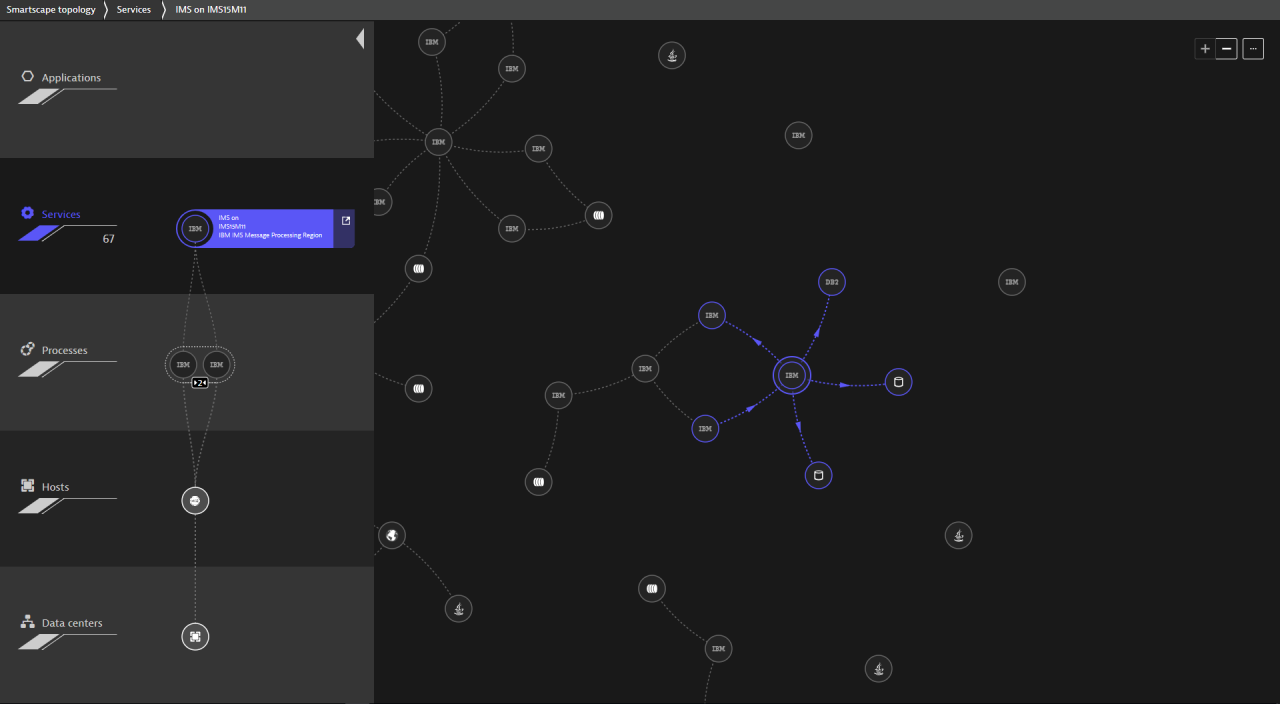
Free trials of mainframe solutions offer a valuable opportunity for organizations to assess the capabilities of these powerful systems before committing to a full-scale deployment. By experiencing the technology firsthand, businesses can make informed decisions aligned with their specific needs and budget. Let’s examine a couple of scenarios highlighting both successful implementations and challenges encountered during these trials.
Successful Mainframe Solution Free Trial: Streamlining Financial Transactions
Acme Financial, a mid-sized bank, was struggling with slow transaction processing times on its aging legacy system. This was impacting customer satisfaction and increasing operational costs. They decided to trial a mainframe modernization solution from a leading provider. During the trial period, Acme migrated a subset of their transaction processing workload to the new mainframe environment. The trial allowed them to test the solution’s scalability and performance under realistic conditions.
The results were impressive. Transaction processing times were reduced by 60%, leading to significant improvements in customer service and a noticeable decrease in operational overhead. Acme successfully integrated the new mainframe solution into their existing infrastructure, ultimately leading to a full purchase and a complete system overhaul. The free trial allowed them to quantify the benefits before investing heavily, thus mitigating risk and ensuring a smooth transition.
Challenging Mainframe Solution Free Trial: Data Migration Issues
Global Corp, a large multinational corporation, initiated a free trial of a mainframe data analytics platform to improve their business intelligence capabilities. However, they encountered difficulties during the data migration phase. Their existing data resided in multiple legacy systems, and the process of extracting, transforming, and loading (ETL) the data into the new platform proved more complex than anticipated.
The trial period’s limited time frame exacerbated the challenges. However, Global Corp proactively addressed the issues by working closely with the vendor’s technical support team. They refined their ETL processes, implemented additional data cleansing procedures, and leveraged the vendor’s expertise to overcome the migration hurdles. While the trial didn’t proceed as smoothly as planned, the experience highlighted the importance of thorough data preparation and planning before a full-scale implementation.
The lessons learned during this trial helped Global Corp refine their strategy for the eventual full deployment, leading to a more efficient and successful transition.
Performance Metrics Comparison: Free Trial vs. Full Deployment
The following table illustrates a hypothetical comparison of key performance indicators (KPIs) for a mainframe solution during a free trial versus a full-fledged deployment. Note that these figures are for illustrative purposes only and may vary significantly depending on the specific solution, workload, and deployment environment.
| KPI | Free Trial | Full Deployment |
|---|---|---|
| Transaction Processing Time (seconds) | 2.5 | 1.8 |
| System Uptime (%) | 99.5 | 99.9 |
| Data Processing Volume (GB/hour) | 50 | 150 |
| Resource Utilization (%) | 70 | 90 |
The table shows that while the free trial provided valuable insights into the solution’s capabilities, the full deployment demonstrated significantly improved performance metrics, reflecting the optimized configuration and dedicated resources allocated to the system after the successful completion of the trial. This improvement is typical as a full deployment allows for thorough optimization and scaling based on the specific needs of the organization.
Last Recap
Ultimately, a mainframe solutions free trial is more than just a freebie; it’s a strategic opportunity to assess, evaluate, and optimize your IT infrastructure. By carefully considering the features, limitations, and business implications, you can leverage a free trial to make informed decisions that positively impact your bottom line. Remember to define clear KPIs, document your findings, and use this experience to shape your long-term IT strategy.
Happy testing!
Questions and Answers
What data is typically included in a mainframe free trial?
This varies greatly by provider, but often includes sample datasets and limited access to production-level data. Always check the specific terms and conditions.
Can I use a free trial for production workloads?
Generally, no. Free trials are for evaluation and testing purposes, not production environments. The terms of service usually explicitly prohibit this.
What happens after the free trial ends?
Most providers offer various paid subscription plans. You’ll need to choose a plan that suits your needs and budget.
Is technical support available during the free trial?
Some providers offer limited support, while others might have a community forum. Check the provider’s documentation for details.



